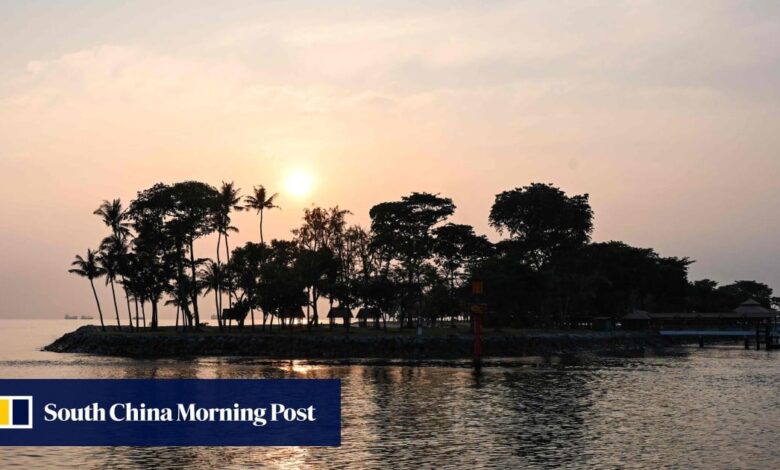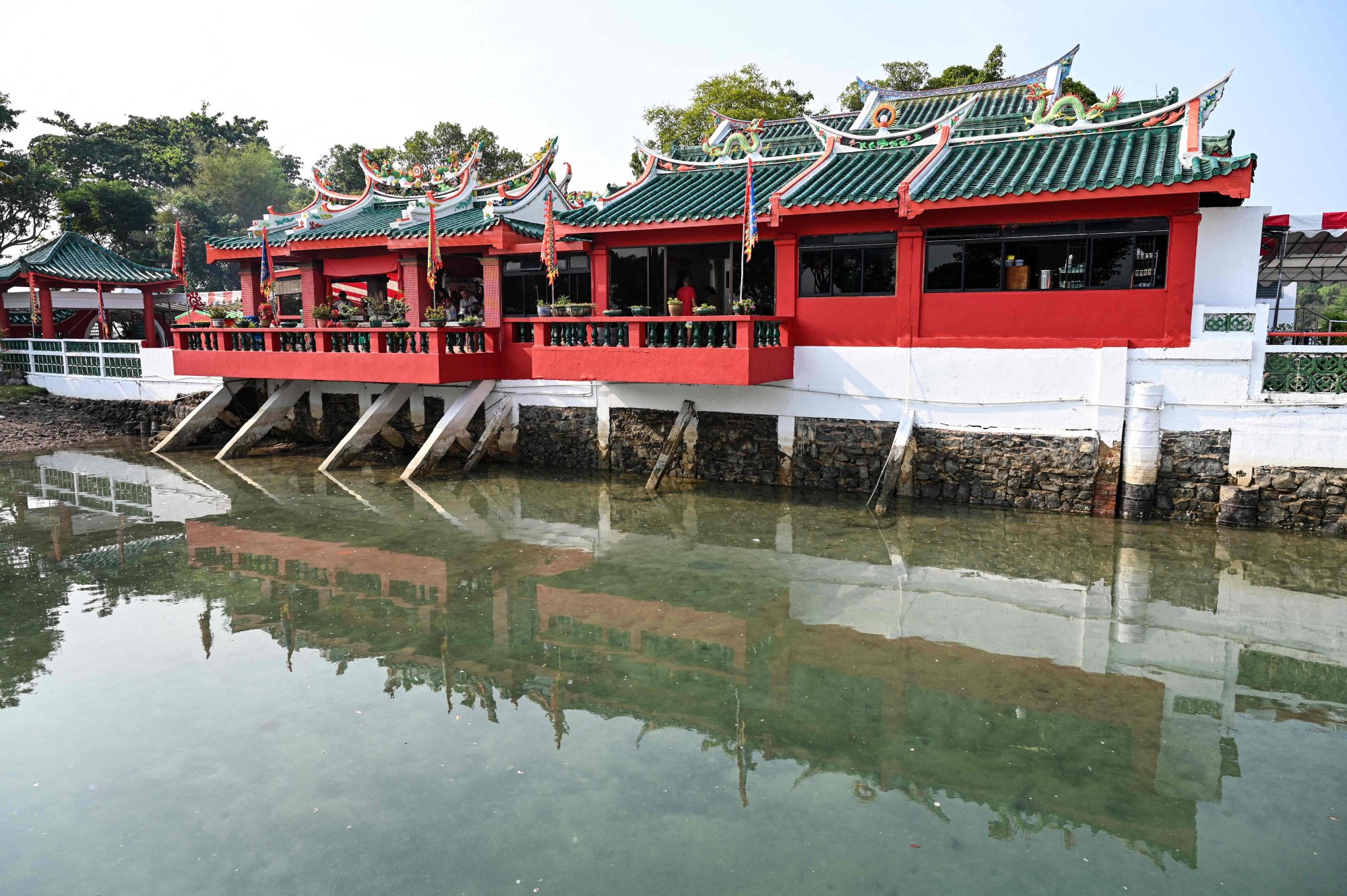Thousands flock to Singapore’s ‘turtle island’ for Chinese temple’s 100th year

[ad_1]
Tens of thousands of Taoist, Buddhist and Confucian devotees are making the annual pilgrimage to Da Bo Gong Temple until November 12 to mark its 100th year on the island, whose name translates to “turtle”.
Founded in 1923, the green, red and white temple named after the God of Prosperity is believed to grant good fortune, serenity and protection.

Guan Yin, the Goddess of Mercy, is one of the temple’s main deities and is thought to answer the prayers of childless couples.
He said his friend, whose wife had a baby after praying at the temple, had advised him to try the same.
Forgotten Singapore: evicted islanders grieve for lost ‘paradise’
Forgotten Singapore: evicted islanders grieve for lost ‘paradise’
Others prayed for good fortune for themselves and for the world at the temple, which is built on the island’s shore and elevated on stilts to protect it against rising tides.
Triton Lee, 10, said a little prayer could help improve his grades in Singapore’s pressure-laden school system.
“When I enter the temple I’m going to pray for … higher scores,” he said after disembarking from the ferry.
While he’s not doing well in Chinese class, Lee believes he has a chance of getting better grades in maths, English and science.
He prayed at the temple last year and was surprised by the maths results that came after.

“I was astounded to get full marks. I couldn’t even speak,” the boy said. “I think both hard work and prayers [lead to good grades].”
The boy’s mother, Sam, said that she would pray for world peace. “At home we pray for peace and happiness and, at a greater level, hoping that the world will get to a more peaceful state,” she said.
For Lau Cheng Poh, 63, and two of his siblings, coming to Kusu on the ninth month of the Chinese lunar calendar is a tradition instilled by their father.
Like most of the older generation in the city state, which is largely ethnic Chinese, he had immigrated from China.
I got a feeling that this tradition will be lost … Like the Chinese dialects, I fear it will become extinct
“There was no ferry before. So we rode on small boats,” said his brother Lau Cheng Eng, 60, adding that coming to Kusu was the equivalent of an overseas holiday for them at that time.
But the brothers said the younger generation is more reluctant to make the yearly pilgrimage.
That’s despite more than 31 per cent of Singapore residents identifying themselves as Buddhist and 8.8 per cent as Taoist, according to a 2020 census.
No ‘cultural cringe’: Lunar New Year traditions in Singapore and Malaysia
No ‘cultural cringe’: Lunar New Year traditions in Singapore and Malaysia
“I don’t want to force my children,” said Lau Cheng Poh. “Young people are busy with their own lives.”
His son Ivan Lau said he will make the pilgrimage for as long as he can, but worries for its future.
“I got a feeling that this tradition will be lost,” said the 29-year-old engineer. “Like the Chinese dialects, I fear it will become extinct.”
[ad_2]
Source link





